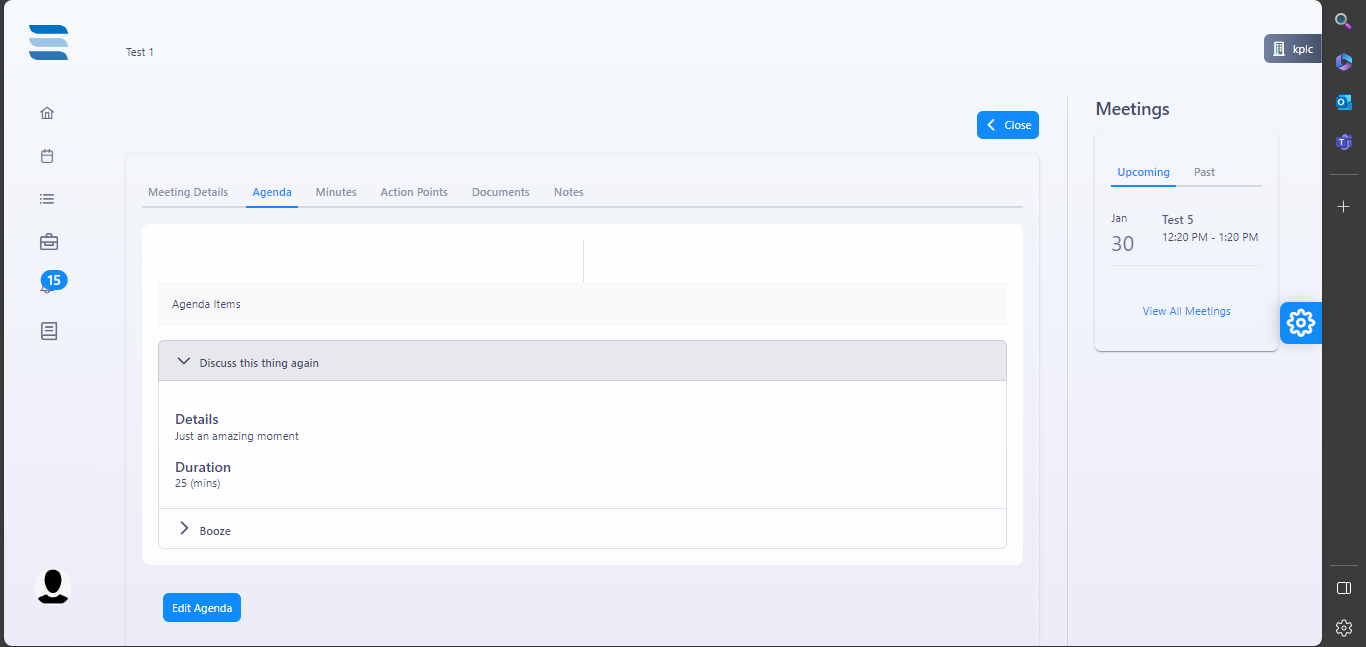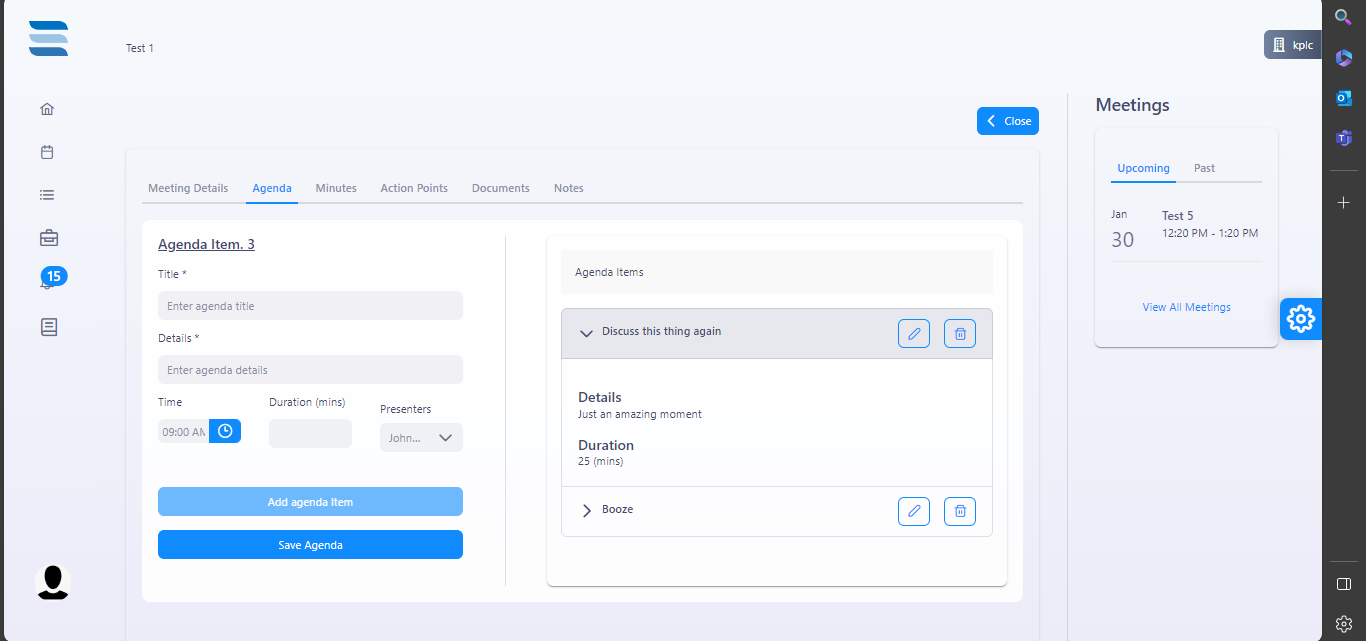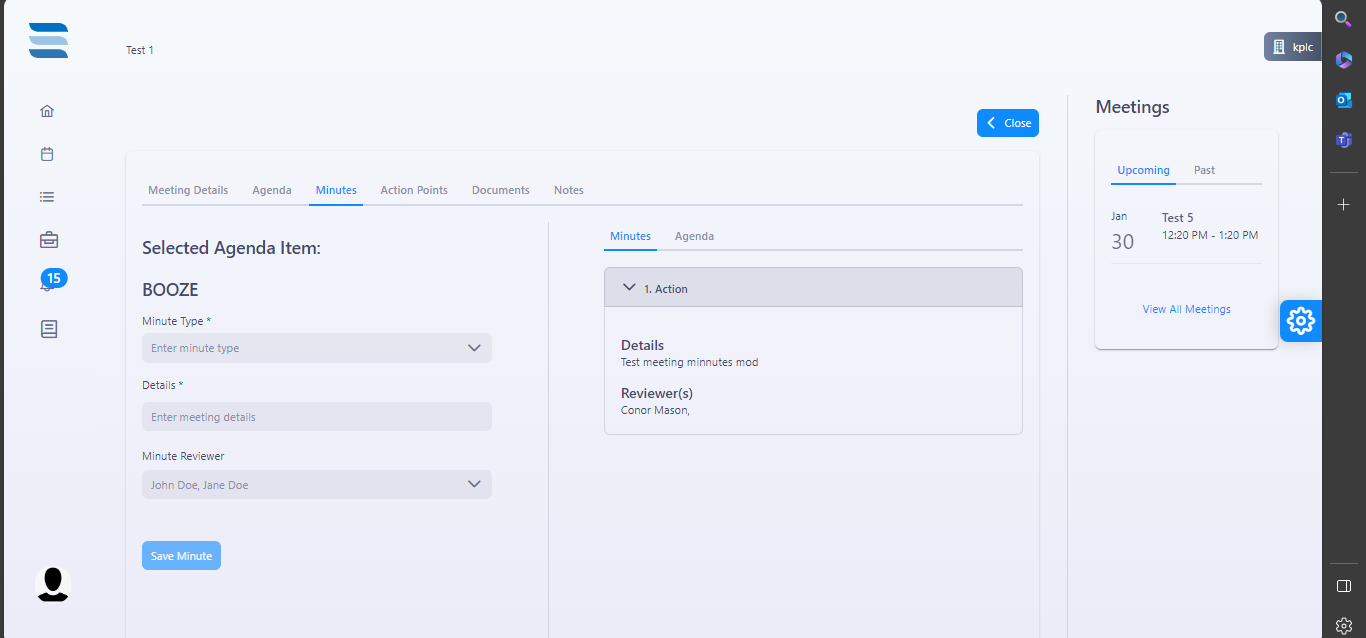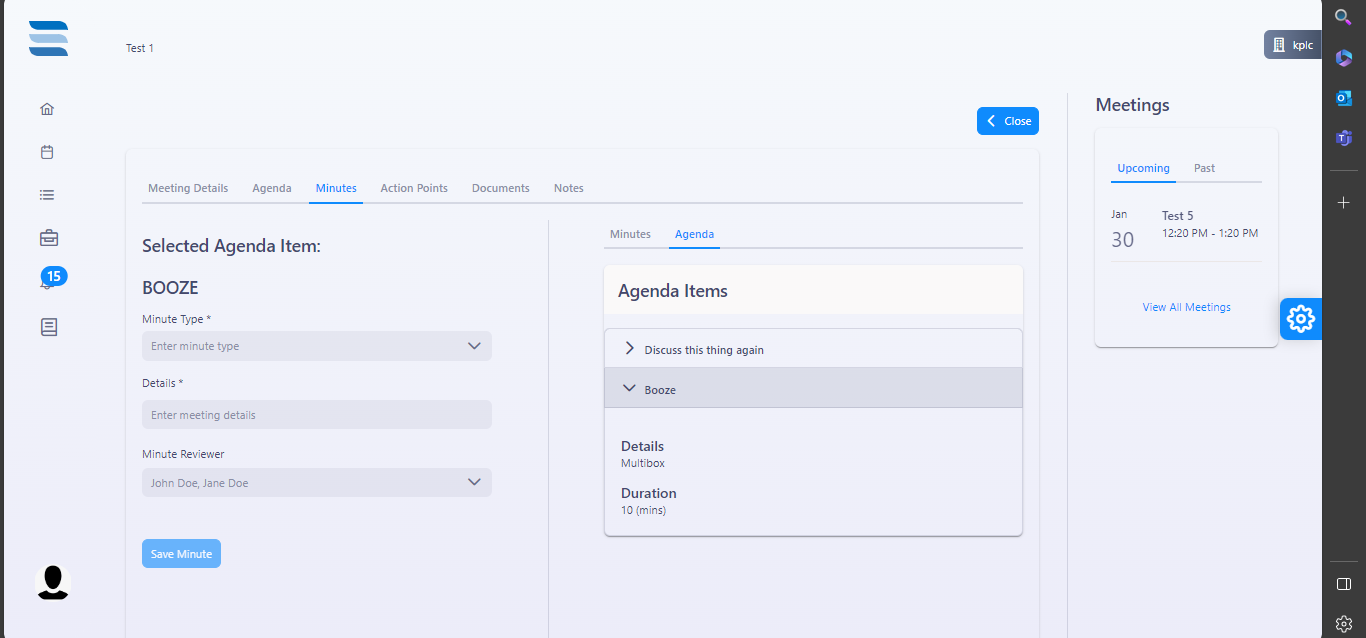
Our professional lives now would not be the same without meetings. While some meetings seem like a waste of time and leave participants dissatisfied and discouraged, others may be quite fruitful and result in insightful conversations and choices. What then distinguishes these meetings? The preparation phase, more especially the creation of a carefully thought-out meeting agenda, holds the key to the solution.
The Foundation of Successful Meetings: The Agenda

Understanding the Purpose of Meeting Agendas
An agenda is essentially a road map for a successful meeting. It lists the subjects to be covered, the order in which they will be covered, and the goals to be met. Meetings may easily turn into pointless conversations without a well-defined agenda, wasting everyone's time and energy. Furthermore, the efficiency of the meeting may be hampered by hasty talks or the omission of crucial problems due to insufficient time allocated for particular themes.
Components of a Well-Structured Agenda
1. Setting Clear Objectives
Each meeting needs to have a clear goal or purpose. Establishing a clear agenda helps ensure that everyone attending understands the goals of the meeting and what you hope to accomplish. Whether the goal is decision-making, feedback-gathering, or idea-generating, it should be made apparent in the agenda. For instance, the agenda should explicitly indicate that the purpose of the meeting is to discuss the introduction of a new product and include discussion topics about the launch, including the target audience, marketing methods, and timetable.
2. Setting Aside Suitable Time Slots
To keep a meeting effective, time management is essential. Enough time should be allotted to each item on the agenda to enable in-depth debate without skipping over crucial subjects. Set the most important things first to ensure they get enough attention and to prevent packing the agenda with too many things that won't get enough attention. The intricacy of the subject and the quantity of participants should be taken into account when assigning time slots. For example, it could be important to set aside additional time for discussion and make sure that all pertinent stakeholders are present if your problem is complicated and needs input from several departments.
3. Sorting Discussion Topics by Priority
Not every item on the agenda has the same level of urgency or importance. Setting issues in order of importance facilitates a planned and rational conversation flow. Prioritise things that are important and must be attended to right now before moving on to less urgent issues. This keeps everyone involved and ensures that crucial choices are made first.
Setting priorities for subjects also aids in efficient time management. When allocating funds for various initiatives, for instance, it makes sense to give priority to those that are approaching their deadlines or might have an effect on the performance of the company as a whole.
Typical Obstacles in Creating an Agenda for a Meeting

Managing Time Restrictions
Time limits impose restrictions on meetings, making it difficult to incorporate all relevant conversations within the allotted amount of time. Meeting planners need to identify the most important issues to cover first and come up with innovative methods to make the most of their time, such as allocating certain amounts of time for each topic or using technology to speed up conversations.
Using effective meeting techniques, such as beginning and completing meetings on time, establishing specific goals for each agenda item, and designating timekeepers to keep conversations on schedule, is one strategy to deal with time restrictions. In order to enable virtual meetings and provide attendees with greater schedule freedom and spend less time on logistics, the organizer may also want to take into account utilizing technological solutions such as video conferencing software or online collaboration platforms.
Handling Difficult Subjects
Certain sessions cover delicate or complicated subjects that need in-depth research and lengthy conversations. Meeting planners need to find a middle ground between giving participants ample time for in-depth investigation and preventing them from becoming overly engaged in long talks.
Dividing large subjects into smaller, easier-to-manage subtopics is one way to handle complicated subjects. The meeting planner can provide particular time periods for each subtopic by breaking the conversation up into concentrated pieces. This way, all the details of the complicated topic will be covered without interfering with the main agenda item. The host may also think about giving attendees resources or pre-reading materials before the meeting. This enables participants to become acquainted with the intricate subject matter beforehand, resulting in more fruitful and knowledgeable conversations at the actual meeting.
Practical Tips for Drafting an Effective Meeting Agenda

Establishing a Clear Agenda Creation Process
Consistency and clarity are made possible by the use of a uniform meeting agenda template. The objectives of the meeting, discussion topics, time allotment, and other necessary pre-meeting materials should all be included in this template. You may save time and make sure all the necessary elements are included by utilizing a template.
For instance, you can list the precise objectives you hope to accomplish during the meeting in the objectives section. This keeps the conversation on topic and helps participants understand what is expected of them. To ensure that no crucial points are missed, the discussion topics section might include a list of the precise problems or queries that need to be answered. By allocating enough time for each item on the agenda, you may avoid having the meeting go longer than planned.
Reviewing and Revising the Agenda
It is not advisable to have a rigid agenda. Check the agenda for correctness and relevancy as the meeting date draws near. Consider any fresh information or modifications that could affect the meeting's goals. Furthermore, have an open mind to changing the agenda in person during the meeting in case new problems or possibilities come up.
By going over and editing the agenda on a regular basis, you may make adjustments to meet changing needs and keep the meeting on track. You can handle new problems or take advantage of unforeseen possibilities that may present themselves throughout the conference by being adaptable and sensitive.
Capturing Action Items
This underscores the pivotal role of methodically documenting and tracking actionable outcomes emerging from board meetings. This then emphasizes the necessity of assigning clear responsibilities, crafting specific and measurable goals, and establishing realistic timelines for each action item. Integration with meeting minutes, utilization of digital tracking tools, and regular progress updates are advocated for seamless monitoring. Furthermore, the subsection suggests robust follow-up mechanisms and comprehensive documentation of completed actions, ensuring accountability and contributing to the organization's historical record of achievements. By adopting these practices, boards can transform decisions into tangible results, fostering transparency, accountability, and the overall efficacy of their governance processes.
Utilizing Technology for Agenda Management
Agenda Management Tools and Systems
In the realm of agenda management, a multitude of tools and systems exist to streamline the process, enhance collaboration, and elevate overall meeting efficiency. While numerous options cater to diverse organizational needs, one standout recommendation is the Sibasi E-Board Management System. Renowned for its user-friendly interface and robust features, the Sibasi E-Board excels in creating, distributing, and updating agendas seamlessly. Its intuitive design allows for collaborative agenda creation, real-time updates, and secure distribution, ensuring that board members stay informed and engaged. The system's adaptability to various meeting structures, coupled with its emphasis on data security and accessibility, positions it as a standout solution in the landscape of agenda management tools. While the choice of agenda management tools may vary, the Sibasi E-Board Management System stands out as a top-tier option, combining functionality with a user-centric approach to elevate the board meeting experience. In this context the system allows you to:
Create and Edit the Agenda and its Items Accordingly

Track time management and the presenters for each agenda item
Minute Management which also allows for custom minutes for each agenda item


Action Points assignment based on the meeting agenda items

However, these are just a glimpse of what the system has to offer. With a comprehensive suite of functionalities, the Sibasi E-Board goes beyond agenda management, encompassing diverse tools to enhance board governance. From seamless document sharing to dynamic meeting scheduling, the system ensures a holistic approach to board management, making it a versatile and indispensable asset for organizations striving for efficiency and excellence in their governance processes.
From Insight to Impact: Concluding the Journey of Mastering Meeting Agendas for Board Excellence
As we conclude this expedition, let's carry forward the lessons learned – that a meticulously crafted agenda is not just a document but a catalyst for impactful decisions and organizational success. May our newfound insights propel us toward a future where board meetings are not merely gatherings but powerful forums for innovation, collaboration, and lasting impact. Here's to embracing the power of well-crafted agendas and unlocking a new era of board excellence.








